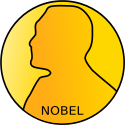Richard Laurence Millington Synge
 | |
| Personlig information | |
| Født | 28. oktober 1914 Liverpool, England |
| Død | 18. august 1994 (79 år) Norwich, England |
| Nationalitet | Britisk |
| Far | Laurence Millington Synge |
| Mor | Katherine Charlotte Swan |
| Ægtefælle | Ann Stephens (fra 1943) |
| Børn | Jane Synge, Elizabeth Synge, Matthew Millington Synge, Patrick Millington Synge, Alexander Millington Synge, Charlotte Synge, Mary Synge |
| Familie | John Lighton Synge (fætter / kusine) |
| Uddannelse og virke | |
| Uddannelsessted | Winchester College Trinity College, Cambridge |
| Medlem af | Royal Society |
| Beskæftigelse | Universitetslærer, biokemiker, kemiker |
| Forskningsområde | Biokemi |
| Arbejdsgiver | University of East Anglia |
| Kendt for | Kromatografi |
| Påvirket af | John H. Humphrey |
| Nomineringer og priser | |
| Udmærkelser | Fellow of the Royal Society, John Price Wetherill Medalje (1959), æresdoktor ved Uppsala Universitet, Nobelprisen i kemi (1952) |
| Nobelpris | |
| Information med symbolet | |
Richard Laurence Millington Synge FRS[1] (født 28. oktober 1914 i Liverpool, død 18. august 1994 i Norwich) var en britisk biokemiker, der i 1952 modtog nobelprisen i kemi sammen med Archer Martin for sine bidrag til kromatografi.
Synge blev uddannet på Winchester College og Trinity College, Cambridge. Han tilbragte hele sin karriere med at forske på Wool Industries Research Association, Leeds (1941–1943), Lister Institute for Preventive Medicine, London (1943–1948), Rowett Research Institute, Aberdeen (1948–1967) og slutteligt på Food Research Institute i Norwich (1967–1976).[2]
Det var i sin tid i Leeds, hvor han arbejede sammen med Archer Martin, at han udviklede partitionskromatografi, der er en teknik til at separere blandinger med ensartede kemikalier, som var med til at revolutionere analytisk kemi.[3] Mellem 1942 og 1948 studerede han peptider i proteingruppen gramicidin, som senere blev brugt af Frederick Sanger til at bestemme strukturen på insulin. I marts 1950 blev han udnævnt til Fellow of the Royal Society. I forbindelse med udnævnelse blev der skrevet:
Distinguished as a biochemist. Was the first to show the possibility of using counter-current liquid-liquid extraction in the separation of N-acetylamino acids. In collaboration with A.J.P. Martin this led to the development of partition chromatography, which they have applied with conspicuous success in problems related to the composition and structure of proteins, particularly wool keratin. Synge's recent work on the composition and structure of gramicidins is outstanding and illustrates vividly the great advances in technique for which he and Martin are responsible.
— "Library and Archive catalogue". Royal Society. Arkiveret fra originalen 27. juli 2011. Hentet 16. april 2016.
Han var kasserer i Chemical Information Group i Royal Society of Chemistry og var professor på instituttet Biological Sciences ved University of East Anglia fra 1968–1984.
Referencer
- ^ Gordon, H. (1996). "Richard Laurence Millington Synge. 28 October 1914-18 August 1994". Biographical Memoirs of Fellows of the Royal Society. 42: 454-426. doi:10.1098/rsbm.1996.0028. JSTOR 770220.
- ^ "Richard Lawrence Millington Synge" (PDF). Royal Society of Edinburgh. Arkiveret fra originalen (PDF) 4. marts 2016. Hentet 25. august 2015.
- ^ Ettre, C. (2001). "Milestones in Chromatography: The Birth of Partition Chromatography" (PDF). LCGC. 19 (5): 506-512. Arkiveret fra originalen (PDF) 4. marts 2016. Hentet 2016-02-26.
Eksterne henvisninger
- Synge's Nobel Foundation biography
- Synge's Nobel Lecture Applications of Partition Chromatography
- Sidney Elsden. "Richard Laurence Millington Synge" (PDF). Arkiveret fra originalen (PDF) 29. oktober 2007. Hentet 16. april 2016.
{{cite journal}}: Cite journal kræver|journal=(hjælp)
|
Medier brugt på denne side
Forfatter/Opretter: User:Gusme (it:Utente:Gusme), Licens: CC BY-SA 3.0
Vector image of the Nobel prize medal
Richard Laurence Millington Synge (1914 - 1994)

